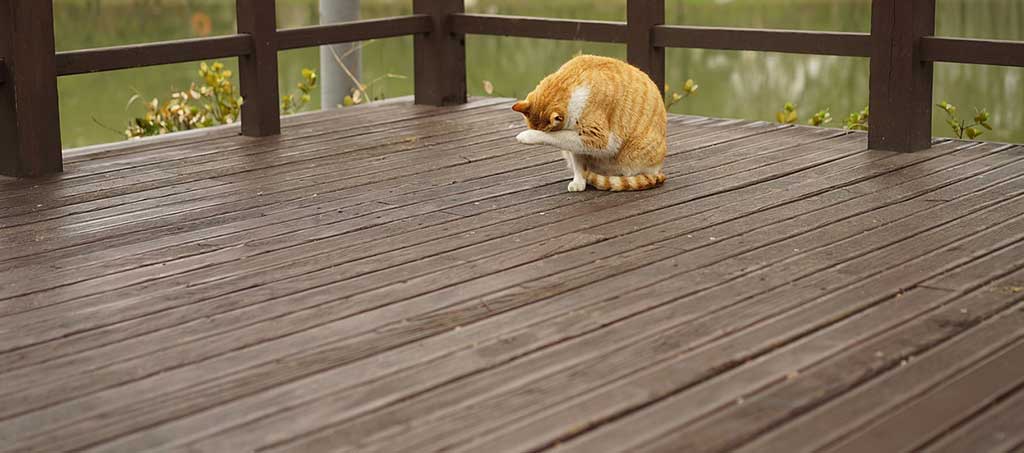Choosing the right material for your deck is one of the most important decisions you’ll make when planning an outdoor space. Wood and composite decking are the two most popular options, each offering unique benefits and drawbacks. While wood decking is cherished for its natural beauty and classic appeal, composite decking has gained popularity for its durability and low maintenance. Understanding the pros and cons of each can help you choose the right material for your needs and preferences. Here’s a detailed comparison of wood vs. composite decking.
Wood Decking
Wood decking has been a go-to choice for homeowners for decades, offering a warm, authentic look that complements any outdoor setting. Common types of wood decking include pressure-treated lumber, cedar, redwood, and exotic hardwoods like ipe and teak.
Pros
-
Natural Beauty: Wood offers a timeless, natural aesthetic that blends seamlessly with outdoor landscapes. Its warm tones and distinct grain patterns give decks a classic and inviting feel that many homeowners love.
-
Customizable Appearance: Wood decking can be stained, painted, or sealed in a wide range of colors, allowing you to customize the look of your deck to match your home’s style.
-
Cost-Effective (Initially): Wood, particularly pressure-treated lumber, is generally more affordable upfront compared to composite decking, making it an appealing option for those on a budget.
-
Eco-Friendly Options: Some wood, such as sustainably harvested cedar or FSC-certified lumber, can be an environmentally friendly choice. Wood is a renewable resource, and untreated wood is free from synthetic materials.
-
Easy to Work With: Wood is easy to cut, shape, and install, making it a great choice for DIY projects or custom deck designs.
Cons
-
High Maintenance: Wood decks require regular maintenance, including cleaning, staining, sealing, and occasional sanding to protect against moisture, UV damage, rot, and pests.
-
Vulnerability to the Elements: Wood is susceptible to splintering, warping, and cracking over time, especially if not properly maintained. Exposure to the sun, rain, and snow can take a toll on wood decks.
-
Shorter Lifespan: Even with consistent upkeep, wood decking generally has a shorter lifespan compared to composite. Pressure-treated wood may last 10-15 years, while premium hardwoods can last up to 20-25 years.
-
Prone to Insect Damage: Wood is vulnerable to termites, carpenter ants, and other pests that can damage the structure and integrity of your deck.
Composite Decking
Composite decking is made from a mix of wood fibers, recycled plastics, and binding agents, creating a durable and low-maintenance alternative to traditional wood. Brands like Trex, TimberTech, and Fiberon have popularized composite decking, offering a variety of colors and styles that mimic the look of wood without the upkeep.
Pros
-
Low Maintenance: Composite decks are designed to resist the elements without the need for sanding, staining, or sealing. They only require occasional cleaning with soap and water to keep them looking great.
-
Durability and Longevity: Composite decking is highly resistant to moisture, fading, staining, and scratching, making it ideal for areas with harsh weather conditions. Most composite decks have a lifespan of 25-30 years or more.
-
Fade and Stain Resistant: Advanced technology has made composite decking resistant to fading and staining from sun exposure, spills, and everyday wear and tear.
-
Wide Range of Styles and Colors: Composite decking comes in a variety of colors, textures, and finishes that closely resemble the look of real wood, giving you the aesthetic appeal of wood without the drawbacks.
-
Eco-Friendly: Many composite decking products are made from recycled materials, such as reclaimed wood and plastic, reducing waste and the need for virgin resources.
Cons
-
Higher Upfront Cost: Composite decking typically costs more upfront than wood. However, the long-term savings on maintenance and replacement costs often make it a worthwhile investment.
-
Artificial Appearance: While composite decking has come a long way in mimicking the look of wood, some people still find that it lacks the natural warmth and authenticity of real wood, especially with older or lower-end products.
-
Heats Up in Direct Sun: Composite decks can get hotter than wood when exposed to direct sunlight, making them uncomfortable to walk on barefoot during the summer months.
-
Limited Customization: Unlike wood, composite decking cannot be painted or stained, so you’re limited to the colors and finishes available from the manufacturer. If you want to change the look, it usually requires replacing the boards.

